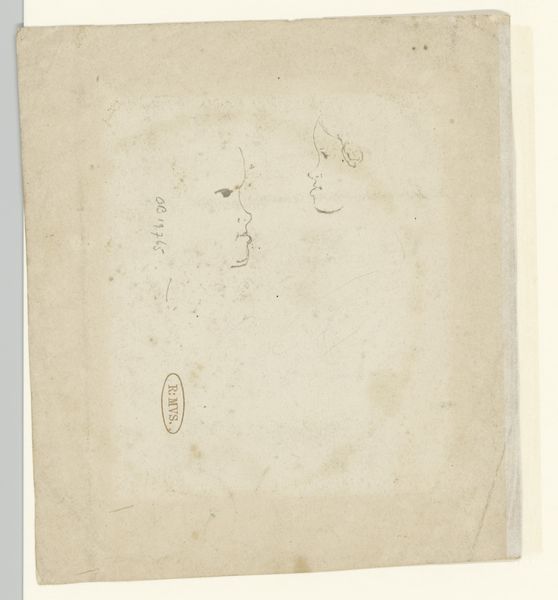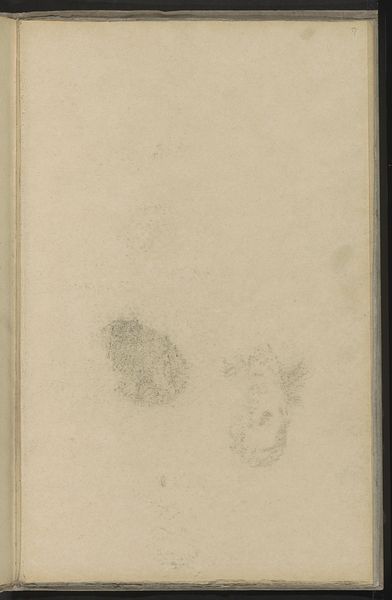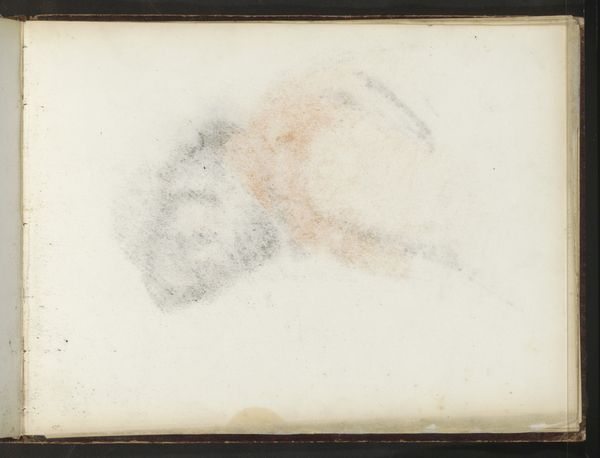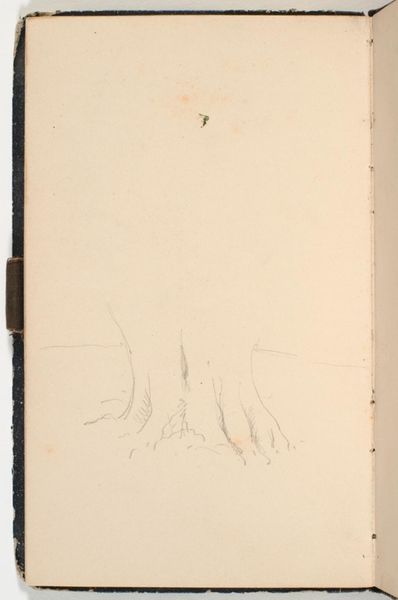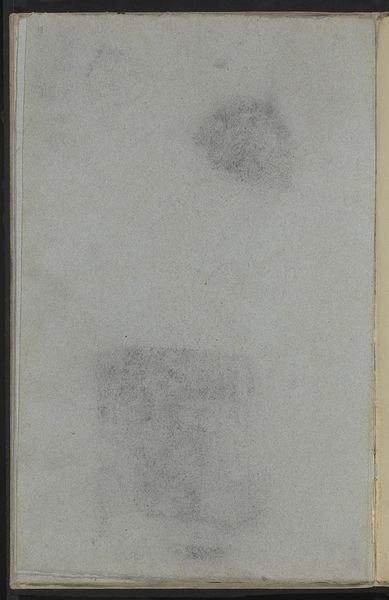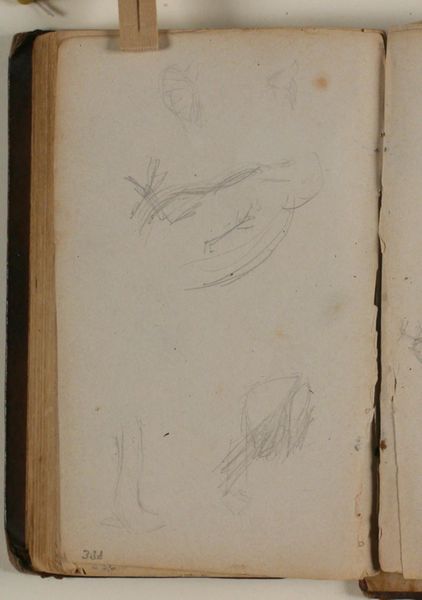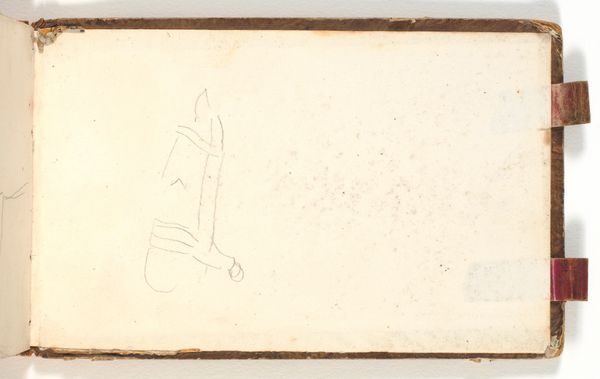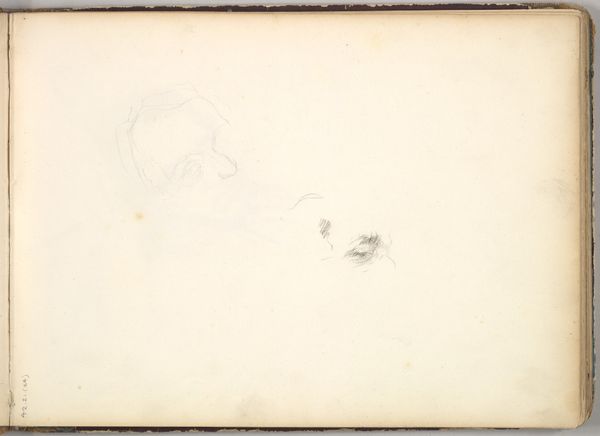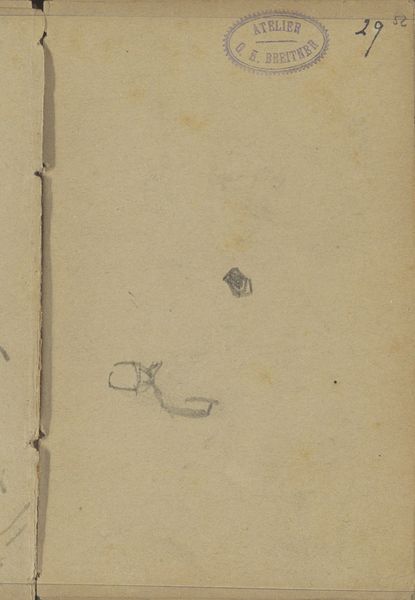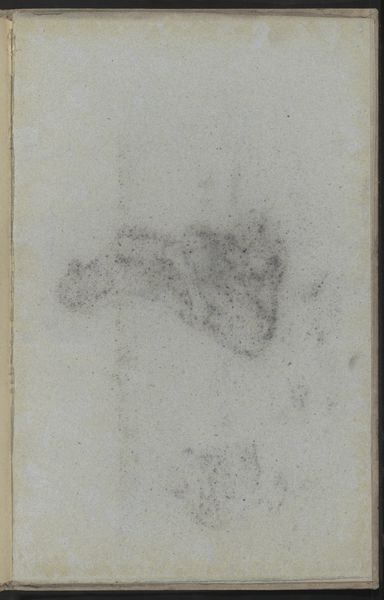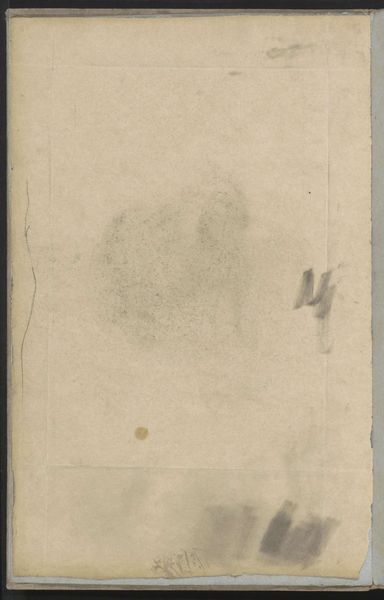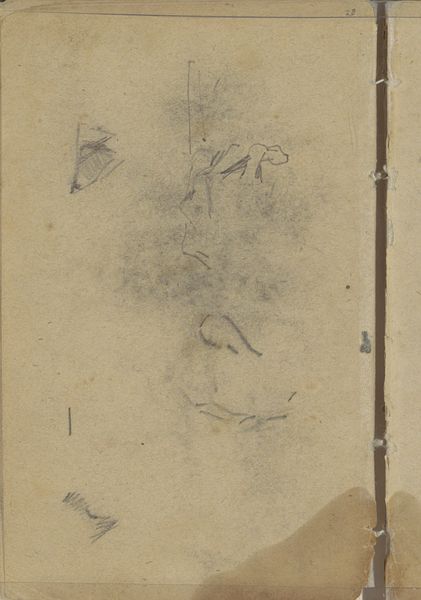
#
toned paper
#
light pencil work
#
personal sketchbook
#
ink drawing experimentation
#
pen-ink sketch
#
sketchbook drawing
#
watercolour bleed
#
watercolour illustration
#
sketchbook art
#
watercolor
Dimensions: 182 mm (height) x 115 mm (width) (bladmaal)
Curator: Here we have "Studie af liggende hund og to figurer", a sketch done by Martinus Rørbye around 1825 or 1826. It appears to be a page torn from a sketchbook, showcasing a resting dog and two barely discernible human figures rendered with what seems to be pen and ink. What's catching your eye about it? Editor: It feels intimate. Like stumbling upon a quiet moment in the artist’s day. The light pencil work and toned paper give it a sort of faded, dreamlike quality, even melancholic, though it is very sparse, a minimalist landscape for half-formed impressions. Curator: The materiality here speaks volumes. This wasn't a commission or a grand statement. It's a private act of observation. These personal sketchbooks acted as both a site for experimentation and a material record of daily life. We get to see the raw mechanics of representation in early 19th-century Danish art through Rørbye's casual but persistent hand. Editor: There's a delightful imperfection. The dog is complete but there’s this vague quality to the humans. Almost as though they existed as ideas, concepts yet to fully come to life. Curator: Precisely! And this challenges our usual ideas of production. Rørbye isn't just passively receiving the world. He's actively working through visual ideas using affordable, easily accessible materials. Sketchbooks become incredibly democratizing tools. Editor: It reminds me that even artistic giants had ordinary days. I picture Rørbye jotting this down quickly. It sparks a connection across centuries because of that very humanness. A casual beauty, unassuming and unfiltered, is there anything else quite like it? Curator: I agree wholeheartedly! The art lies not only in the rendering of the dog, which he took seriously and brought to completion, but also in the indexical function of the book itself as both a site of artistic work and life recording in tandem. A poignant reminder that creativity and everyday life are intrinsically intertwined. Editor: Yes, this simple piece has so much to teach about seeing and being seen. Thanks. Curator: Absolutely, thank you.
Comments
No comments
Be the first to comment and join the conversation on the ultimate creative platform.
